1. Na`at

Nat-e-Sharif: A verse form in Islamic verse literature, which is written in praise of the Prophet Hazrat Muhammad Sahab. This verse form is also sung with great admiration. The common poet who writes Naat-e-Sharif is often called Naat Go Shire and the one who singing the na'at Naat Khwa. This custom of Nat Khwani is common in India, Pakistan and Bangladesh. According to the language, Nat Khwani is common in Pashto, Bengali, Urdu and Punjabi. Nat Khwan is common in Turkish, Persian, Arabic, Urdu, Bengali, Punjabi, English, Kashmiri and Sindhi languages.
2. Dapha Music
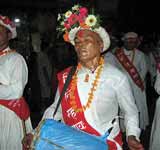
Dapha music is based on six types of Newa Music. Thi-thi raga and rhythm-based juglin music style is completely inspired by classical music.
3. Aarti
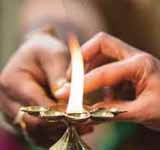
Aarti in Hinduism, a ritual of reverence for a deity, respected person or sacred object, during which the object of worship is lit by a lit lamp. The content of the ritual held in temples, at home or in a holy place, is that the object is illuminated to the sounds of shankha, bells and reading a mantra or singing a hymn. The ritual is performed early in the morning when the deity is "awakening" or in the evening during twilight, when it "goes to bed". In most cases, arati is performed at the end of a temple or home puja. In Hinduism, the tradition of holding aarati came from the Vedic fire sacrifices. The rite symbolizes the interaction of five natural elements: space, wind, fire, water and earth. Aarti is performed from one to several times a day and certainly completes the puja (in South India) or bhajans (in North India). The person responsible for the puja or pujari in a circular motion offers a lit lamp to the object of worship. He makes a circular motion with a lamp in front of a person or object of worship, recites a mantra or sings the aarti hymn. Movements are made clockwise, which symbolizes the path of the sun from sunrise to sunset. The lamp is held by the right hand, in respect of the left hand holds the elbow of the right hand. Heavy fixtures are held with both hands. It is believed that during aarti the fire is sanctified, that is, it acquires divine power.
4. Borgeet
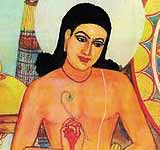
The Borgeet is a uniquely sung melody, a highly accomplished bhava, composed by Srimanta Shankardev and Madhavdev, the great men of the New Vaishnava religion of Assam. These songs composed in Brajavali language sing the praise of Shri Krishna. Banikant Kakoti called these songs noble numbers, Kaliram Medhi called these songs great songs or songs celestial, and Debendra Nath Bezbaruwa called them holy songs. A total of 30 Borgeet of the present Shankaradeva are found. According to Sorit Puthi (Book of Charit), Shankaradeva composed a total of 280 Borgeet. But many songs burned in Bonpura Jui. Although is said that Madhavdev have composed a total of 240 Borgeet, currently only 170 are found. Some of these are songs of Aankiya Nat. Balagopal's various infant leelas, such as mischief, play-joking, chowry-tact, pride, leelas with gopis of Gopi Krishna, dancing with gopis, distraction of gopinios and distraction of Krishna's love, Uddhav's own love for Krishna and Devotion, description of the sad atmosphere of Krishna-less Vrindavan, etc. is a matter of borgeet. It is estimated that this Borgit based on Dhanashree Raga was written in Badrikashram. This incident of Badrikashram is found in Guru Charit.
5. Gunla Bajan
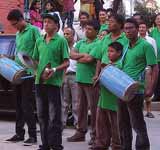
Gunla Bajan hold a very important place for the Buddhist community in Nepal. This devotional music played by the Newars of Nepal.
6. Kirtan
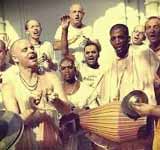
Kirtan, or sankirtan - a form of spiritual practice in Hinduism and Sikhism, consisting in the collective singing of the names and glories of God. Kirtan is practiced in all areas of Hinduism, but this practice has become most widespread in Vaishnavism. The kirtan is carried out as follows: first, the leader sings the mantra in whole or in part, then everyone repeats it in chorus, then the leader re-enters, etc. Singing is usually accompanied by mridans and karatals (small cymbals), harmonium and sometimes other instruments are also used. In kirtan, traditional melodies are usually used. In the tradition of Gaudiya Vaishnavism, it is customary to dance while singing - dance is considered one of the important elements of Hare Krishna bhakti. Kirtans usually begin slowly and then accelerate. Each stage of kirtan has its own mrdanga and karatal rhythms. The Sanskrit root of the verb kirtt means "say something loudly so that others can also hear." The meaning of the word kirtan is often interpreted as "loudly proclaiming the splendor of the Almighty so that everyone hears." The task of a kirtan practitioner is to completely immerse himself in spiritual sound vibration for a while.
7. Qawwali
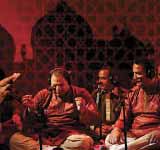
The qawwali is a type of religious music traditional South Asian native to India Islamic, formed by a fusion of Arabic and Hindustani rhythms that were settled since the Islamic invasion mogul. This type of music of the Islamic sanctuary is basically a vehicle to spread the central philosophy of Sufism (mystical and utopian branch of Islam). Its musical context encompasses characteristics of Sufi ideology and history that are promoted culturally, and date back to the wealthy classes of India and Pakistan. The qawwali is mainly a religious musical art that within its religious practice and teaching does not prohibit the participation of other religious cultures, such as Sikhism and Hinduism. Its musical conformation is based on the Indian raga system, where a modern or traditional composition is created that includes poems or legends originally composed by great Sufi poets. Some of the themes encompass the philosophical, romantic and social spheres that are also well promoted among this ideological character, and metaphors are often even recited to explain metaphysical issues. The qawwali is recited mainly in Hindi, Punjabi, Urdu, Arabic, and abstract Arabic, but also is executed in instrumental versions. It is well recognized by all the international Islamic religious culture, being also appreciated mainly by Sikhism, since in the literal composition of the Guru Granth Sahib certain fragments, annexes and legends are included, elaborated by own Sufi elemental teachers, such is the case of Kabir and Rumi.
8. Shyama Sangeet
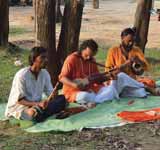
Syamasangita Cali bisayaka Bengali bhaktigitira a popular genre. The music in this class is a prominent stage in the genre. The Shaktabis mainly believed in the Tantra Shastri philosophy, and the Tantrism was widely used in Shamsangi. In the verses of Shayamas, Kali or Shiva are imagined as mother and devotee as child. At this stage the lyrics have been published in the lyrics of the emotions of the devotees, feelings of despair, resentment, complacency, grievances, sorrow and suffering. For this reason, the close attachment of self-sacrifice, along with simplicity, has become wonderful poetry in the weeds. Not only that, the spirituality of these verses bound in the bonds of social life and caste has finally come to life in a poetry. This genre of Shamas songs developed in the eighteenth century. During this time, during a political and social crisis in Bengal, especially in West Bengal, Shaktarshan and Shaktipuja became increasingly popular instead of Vaisnava fanaticism. This is because many of the Shakti Peethas of Goddess Adyashakti Mahamaya are in Bengal.
9. Sufi Music
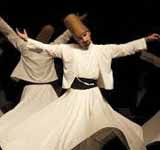
Sufi music is the generic term for regionally different styles of Islamic music, which is part of the ritualistic practice of adherents of Sufism. In many orders (tarīqa) of the dervishes the practice of music is common, which often consists only of songs, but is also accompanied instrumentally in other tariqas. The music is part of the Dhikr (memory of God), because the songs either recite the names of God, or sing about the love for God or the prophet Mohammed. Sometimes the lyrical works of well-known Sufi poets (for example Rumi or Yunus Emre) were later used as lyrics. In the different traditions there are also different ways of instrumental accompaniment to Sufi music, if at all. Frame drums (Bendir or Daf) and the reed flute Nay, but also the stringed instruments Tanbur, Ghichak and Rabāb are often used as instruments. The sound of the nay is mostly described as plaintive or longing, which is why it is generally considered the instrument of the Sufis. Just like the pipe from his home, the reed was cut, its sound symbolizes the longing of the soul of the spiritually searching person, who is separated from the uniqueness, for their original home.
10. Bhajan
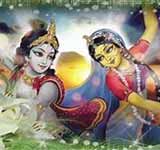
There are mainly three distinctions of Indian music - classical music, smooth music and folk music. Bhajan is a style of smooth music (Sugam Sangeet). Its basis can be classical music or folk music. It can also be performed on stage but basically it is a song sung in praise of a goddess or deity. It is commonly used in all Indian methods of worship. Bhajans are also sung in temples. Hindi hymns which Hindus generally remember, or sing to their almighty. Nomenclature of some famous hymn creators - Mirabai, Surdas, Tulsidas, Raskhan. The chanting of bhajan is closely related to bhakti (devotion directed to God). Bhajan songs are deeply rooted in the Hindu tradition. Bhajan are normally songs in lyrical language, in which emotions of love are expressed for a divinity, both for a particular god or goddess and for various divinities. Many bhajan describe different names and aspects for a deity, especially in the case of the Hindu sahasranamas ('thousand names'), with a list of 1008 names of divinities. Within the framework of Vaisnavism, bhajan (in Sanskrit 'worship') is a type of deep meditation. It is always done sitting on the floor, sometimes in silence, sometimes by reciting one or more mantras. In Gaudiya Vaishnavism (Bengali Visnuism) Bhajan is considered a form of worship of Krishna.
